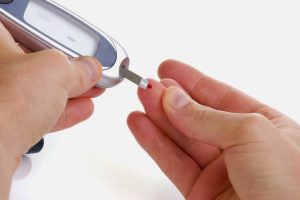Insipid diabetes – insipidus, without taste – that is characterized by abundant urination of very diluted urine. It is characterized by the elimination of large volumes of urine (polyuria) and the increased sensation of thirst associated with the ingestion of large volumes of fluid (polydipsia).
The main symptom of central diabetes insipidus is polyuria, that is, the elimination of large volumes of urine. In addition, it is accompanied by polydipsia (increased sensation of thirst associated with the ingestion of large volumes of fluid) and nocturia (urinating especially at night).
Vasopressin acts on certain cells of the kidney (epithelial cells of the collecting tubes) increasing the reabsorption of water, which results in the concentration of urine and dilution of the blood. This action is necessary for maintaining the balance of ions and water in the blood. Its secretion is regulated by the osmolarity of the plasma, that is, by the concentration of the ions in the blood; In a healthy person, the two extreme situations would be: when the osmolarity is higher (more ions), vasopressin is secreted and this acts on the renal tubules reabsorbing more water; when the osmolarity is lower (fewer ions, that is, the blood is more diluted), no vasopressin is secreted, water is not reabsorbed in the renal tubules, and it is eliminated in the urine.
In a patient with diabetes insipidus, vasopressin would not be produced or not (depending on the type of diabetes insipidus) when it is necessary, that is, when the osmolarity of the blood is greater and, therefore, the water that should be reabsorbed. The blood is eliminated with urine, so the urine is very diluted.
Depending on the causes that have caused the disease, two types of diabetes insipidus are distinguished: central, hypothalamic or neurohypophysial and nephrogenic.
Central insipid, hypothalamic or neurohypophyseal diabetes
It is due to a deficient production of the hormone vasopressin (also called arginine-vasopressin [AVP] and antidiuretic hormone [ADH]) due to lesions in the hypothalamus (area of the brain where vasopressin is synthesized) or in the pituitary gland (connected endocrine organ) with the hypothalamus, where vasopressin accumulates), specifically in the posterior pituitary gland.
 Nephrogenic insipid diabetes
Nephrogenic insipid diabetes
As its name suggests, the cause is in the kidney. The situations in which the kidney does not respond to the action of vasopressin are:
- Acquired forms: renal insufficiency, hypokalemia (potassium concentration in the blood below normal values), hypercalcemia (blood calcium concentration higher than normal values), or lithium or drug poisoning.
- Family forms: less frequent than acquired ones.
Always take care of your health with a unique and efficient service. Visit Pharmamedic.






